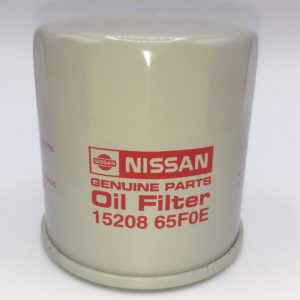
One of the most critical aspects of Nissan 370Z ownership and maintenance is routine and proper changing of your oil. The VQ37VHR engine, while known for being quite reliable, needs regular oil changes like any other car. Fortunately, this is something you can do yourself as opposed to taking it to the shop to get done. This guide will serve as a reference for engine oil type, weight, proper filter, oil change procedure, and more.
Some of the links on this page may be affiliate links, meaning I receive a commission (at no extra cost to you) if you click on the link and make a purchase. I only recommend products I’ve used and trust unless stated otherwise.
Lubrication Intervals
It is generally recommended that for the Nissan 370Z, you should change your oil and filter every 3,750 miles or every 6 months, whichever comes first. If the 370Z is put away for the winter it is always recommended that you change the oil and filter as part of your spring maintenance as you bring the car out of hibernation. Additionally, it is a great idea to regularly check the oil and to top off the oil if you notice the oil-line on the dipstick getting close to the ‘low’ indicator.
Oil Type and Brand

For the 370Z, there is very little question of what brand of oil you should choose, as Nissan produces their own brand of ‘Ester’ oil that they recommend you always use to change the oil on any year 370Z. With lots of older vehicles, such as the 240Z, there is a ton of debate of what exact brand of oil you should buy. Car enthusiasts argue over whether you should purchase synthetic oil and if so, what synthetic additives it should have, and on and on. The benefit of this Nissan Ester oil is that you know for sure that you are making the perfect choice for your engine — this is the exact same oil the vehicle came from the factory with. You’ll need 6 quarts of Nissan Ester oil. I recommend 6 quarts, as you will be filling 5 1/8 quarts and you will have some left over to top off with.
Filter Type

The 370Z features a cartridge-type oil filter as opposed to a permanent housing setup for the filter. Our primary recommendation for which filter to use is a Nissan Genuine OEM oil filter, part number 15208-65F0E. We sell this part on the ZCarGuide store.
Another important note here is that you should stay away from FRAM oil filters! FRAM filters are cheap, but naturally this means that the actual build quality is cheap. I normally try to stick to only recommending products I believe in, but I have heard too many horror stories of FRAM filters breaking up and becoming adding contaminants instead of capturing them! I have heard of more than one occasion where the paper inside of a FRAM filter came loose and caused havoc inside the engine by going straight for the camshaft. While it may be tempting due to the cheap price point, I recommend you steer clear of FRAM filters.
Oil Capacity
The Nissan 370Z’s VQ37VHR engine has an oil capacity of approximately 5.125 quarts, or 4.9 liters.
Oil Change Process

- Start the engine and let it idle for a few minutes to heat up the oil. This is helpful because it will allow the oil to flow more freely so you can accomplish a more “complete” oil change.
- Jack the 370Z up using a jack and suspend it in the air with a set of jack stands. If you do not have one, I’d recommend you purchase one for routine maintenance. Another great (possibly better) option is a set of ramps which allow you to just drive up and do jobs like this much quicker and easier.
- Remove all the bolts holding up the front beauty shield underneath the front end of the car. This gives you access to the underside of the oil pan and the drain bolt, which is located on the passenger side of the oil pan.
- Line up your oil catch pan and remove the plug. Be careful of hot oil and do your best to catch the plug and crush washer before the oil starts pouring out. If you miss it, don’t worry — it happens to the best of us! Just be careful when retrieving the plug and washer from the pan of hot oil.
- To remove the old oil filter, simply unscrew it off. If you cannot quite get it by hand, you will need to use a set of oil-filter pliers. If the filter has been over-tightened and cannot be unscrewed by hand or with a set of filter pliers, you can drive a long punch through it and use it as a handle to unscrew the filter.
- With the filter removed, take out the oil cap to improve the flow of old oil out of the engine. Simply wait a few minutes for the oil to drain fully.
- Clean old oil off the mating surface where the old oil filter attached to the engine.
- Take your new Nissan OEM oil filter, and smear a few drops of new oil around the outer ring of the new filter. This allows the filter to make a better seal, and makes it a bit easier when you have to change the oil again next time.
- Torque the oil filter down to 15 ft./lbs., or if you don’t mind being a bit less precise, take it 3/4 of a turn past snug.
- Reinsert the drain plug with the new drain plug washer. Torque it down to 22 ft./lbs.
- Lower the car, or reverse away from your ramps.
- Pour 5 quarts of oil in.
- Run the engine for a few minutes and check the oil level. You may need to add a bit more to get it to read between ‘low’ and ‘high’ on the dipstick. Note: make sure you’re on a level surface!
- If you are able to get a good reading on engine oil, don’t forget to reattach the beauty shield before driving again.
